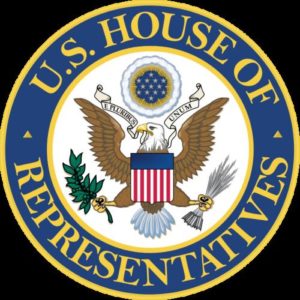By Jim Ellis
June 3, 2020 — Ten entities held primary elections yesterday, and among the voting results we saw a second US congressman being denied re-nomination, as well as two primary victors who have virtually secured their seats in the next Congress:
• DISTRICT OF COLUMBIA: Former vice president Joe Biden easily won the DC primary last night in capturing 78 percent of the vote, which is a significant improvement over his last two performances in Oregon and Hawaii. Biden is now within shouting distance of officially clinching the Democratic nomination and will do so next week when six more states vote in their primary elections.
• IDAHO: 2018 gubernatorial nominee Paulette Jordan with her 86 percent Democratic primary win yesterday will challenge Sen. Jim Risch who seeks a third term. Sen. Risch is a clear favorite to win in November.
Both US Reps. Russ Fulcher (R-Meridian) and Mike Simpson (R-Idaho Falls) were easy winners for re-nomination scoring 80 and 72 percent victories, respectively, and each has minimal opposition in the general election.
• INDIANA: Biden recorded a solid 76 percent in his Hoosier State Democratic primary. Gov. Eric Holcomb (R) will square-off with Democratic former health commissioner Woody Myers in November as both men were unopposed in yesterday’s primary. Gov. Holcomb appears safe for re-election in the fall.
North Township Trustee Frank Mrvan, with retiring Rep. Peter Visclosky’s (D-Merrillville/Gary) endorsement, defeated Hammond Mayor Tom McDermott state Rep. Mara Candelaria Reardon (D-Lake County) in the open 1st Congressional District, and now becomes the prohibitive favorite to succeed Visclosky in the next Congress.
In the Indianapolis area’s 5th CD, state Sen. Victoria Spartz (R-Noblesville) scored an impressive victory over three Republican opponents to capture the party’s open seat congressional nomination. Spartz will now battle former state representative and 2016 lieutenant governor nominee Christina Hale (D) in the general election. Likewise, Hale defeated three Democratic opponents to win her nomination. The Ukrainian born Spartz is favored to succeed retiring Rep. Susan Brooks (R-Carmel) but the Democrats are expected to make a run at the seat.




 April 29, 2020 — The deadline for the Census Bureau to release the new population data is March 31, 2021, but with the entire process being delayed due to COVID-19 precautions, the ability to meet the requirement is becoming more difficult by the day. Already, the Bureau has been delayed in dispatching their door-to-door teams necessary in obtaining the responses from people who did not return their mail tabulation form.
April 29, 2020 — The deadline for the Census Bureau to release the new population data is March 31, 2021, but with the entire process being delayed due to COVID-19 precautions, the ability to meet the requirement is becoming more difficult by the day. Already, the Bureau has been delayed in dispatching their door-to-door teams necessary in obtaining the responses from people who did not return their mail tabulation form. By Jim Ellis
By Jim Ellis The early media time reservations are invested in five states: Arizona, Colorado, Iowa, Maine, and North Carolina. This is certainly not the limit of the SMP planned expenditures, nor is the organization likely committed to fulfilling the entirety of this time buy without having negotiated an escape clause. All depends upon their agreements with the individual television outlets and does not include any future expenditure the group may make for radio and digital advertising.
The early media time reservations are invested in five states: Arizona, Colorado, Iowa, Maine, and North Carolina. This is certainly not the limit of the SMP planned expenditures, nor is the organization likely committed to fulfilling the entirety of this time buy without having negotiated an escape clause. All depends upon their agreements with the individual television outlets and does not include any future expenditure the group may make for radio and digital advertising.